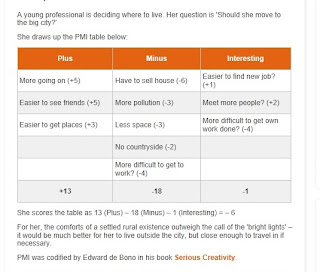"In today's knowledge-based economy, what you earn depends on what you learn. Jobs in the information technology sector, for example, pay 85 percent more than the private sector average." (Bill Clinton, 2009)
These past six weeks have taken me on an eventful journey through cyberspace. With many weeks of confusion and frustration, gladly I can say I personally have enjoyed what has been taught to me within our lectures and what I have learnt within this six week period. Turns out using technology over six weeks for an assessment can be quite fun.
Before I had joined Managing E-Learning, I had immediately thought I knew most of the resources that educators would be using. I was mistaken immediately within the first lesson and will never cease myself to having this approach to learning again. As the saying goes "You learn something new everyday". I did learn within the first lesson of Managing E-Learning to always be open to fresh ideas and never think you know everything otherwise you will have a closed-off approach to newly found knowledge.
Realistically if future educators are not taught the use of resources and computer/internet based technological skills, we are failing our learners to adhere to their future within the knowledge economy. Knowledge is power, and with power is technology. Technology is fast growing and so future educators should be keeping up to date with latest idea's/potential resources that could be used within a classroom. Currently educators use interactive whiteboards as a main factor of ICT tools within the classroom.
Interactive whiteboards can be used for the following purposes:
- Teacher can use whiteboard as a source of writing information on the board
- Can collect data from information on the internet efficiently
- All the resources that I have learnt over the past six weeks can be viewed on the whiteboard and interact within the classroom.
- Connects to a computer easily, therefore can view information from a laptop or computer etc.
- Students can interact ICT skills by using this interactive whiteboard.
- Enjoyable for learners.
- Can be used for Mathematical lessons (as shown in picture)
- Can be used in primary and secondary sectors

As future educators, we need to be comfortable with the interactive whiteboard as it is used for so many purposes within the classroom.
Techonology is widely renowned in classroom activities across the country, even the world.
In conclusion, this subject has made me realise the options and the endless list of skills, resources and tools that can be used for any learning experience within a classroom. Students within the 21st century are growing with technology, therefore future educators should allow students to stick to their social practices and allow the growth of technology within the classroom.
These ICT tools that were profounded within the past six can vary from Prep-Year 12 and the list is endless of what can be done with the resources. Some resources may be time consuming but they are engaging for all learners. That is effectively what learning managers should be striving for. I effectively will be allowing an array of ICT tools to be used within my classroom in future years.
In conclusion, this subject has made me realise the options and the endless list of skills, resources and tools that can be used for any learning experience within a classroom. Students within the 21st century are growing with technology, therefore future educators should allow students to stick to their social practices and allow the growth of technology within the classroom.
These ICT tools that were profounded within the past six can vary from Prep-Year 12 and the list is endless of what can be done with the resources. Some resources may be time consuming but they are engaging for all learners. That is effectively what learning managers should be striving for. I effectively will be allowing an array of ICT tools to be used within my classroom in future years.
References:
Quotes derived from:
Interactive whiteboard picture:
Screenshot of internet page:
http://www.interactivewhiteboard.net.au/lessons/primary.aspx
http://www.interactivewhiteboard.net.au/lessons/primary.aspx













